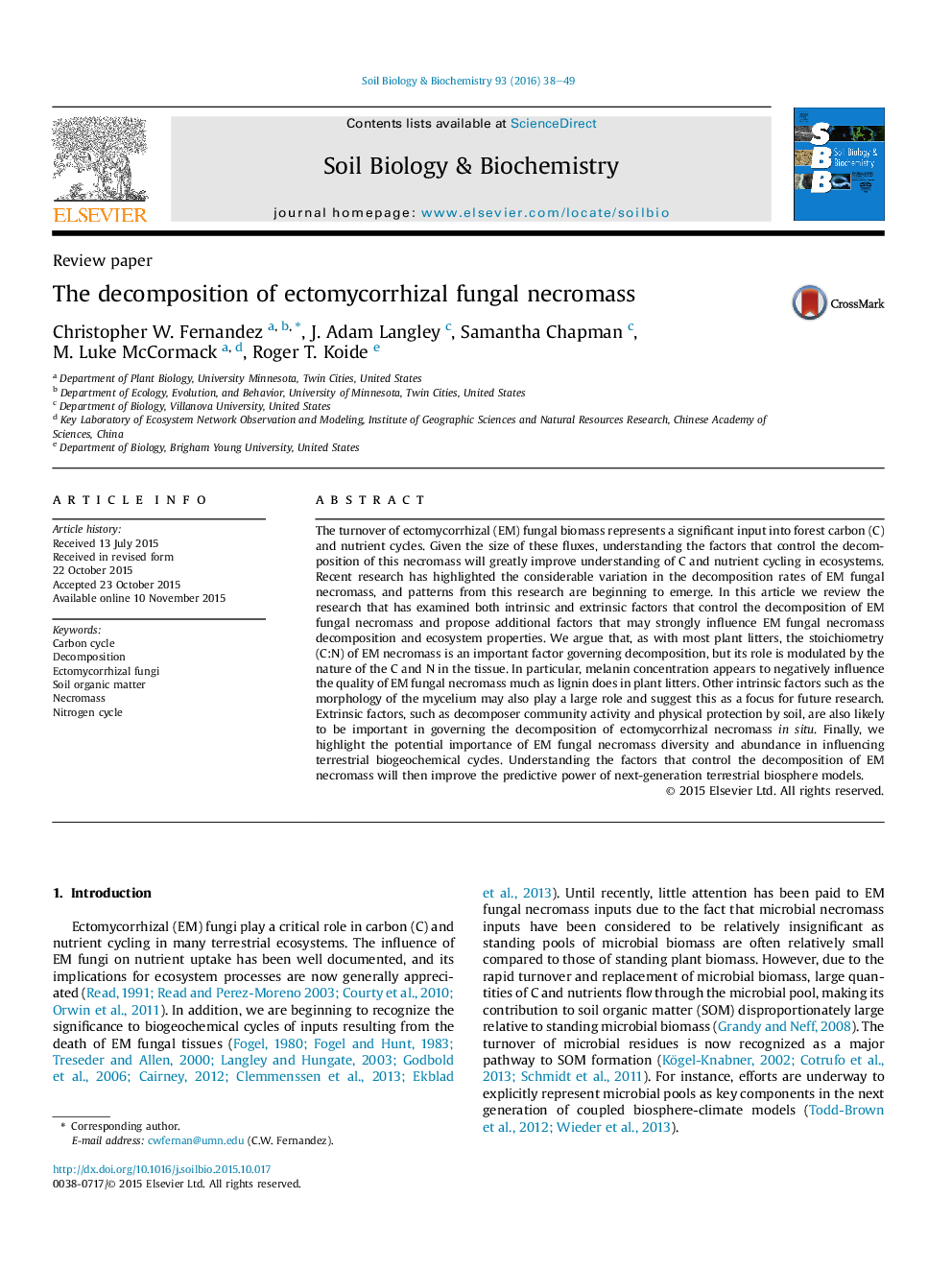| Article ID | Journal | Published Year | Pages | File Type |
|---|---|---|---|---|
| 2024243 | Soil Biology and Biochemistry | 2016 | 12 Pages |
•The turnover of ectomycorrhizal biomass is a large input into forest soil.•Understanding the fate of this necromass has important implications for C & N cycling.•We review the factors controlling ectomycorrhizal fungal necromass decomposition.•Intrinsic and extrinsic factors are discussed in the context of regulating necromass decay.
The turnover of ectomycorrhizal (EM) fungal biomass represents a significant input into forest carbon (C) and nutrient cycles. Given the size of these fluxes, understanding the factors that control the decomposition of this necromass will greatly improve understanding of C and nutrient cycling in ecosystems. Recent research has highlighted the considerable variation in the decomposition rates of EM fungal necromass, and patterns from this research are beginning to emerge. In this article we review the research that has examined both intrinsic and extrinsic factors that control the decomposition of EM fungal necromass and propose additional factors that may strongly influence EM fungal necromass decomposition and ecosystem properties. We argue that, as with most plant litters, the stoichiometry (C:N) of EM necromass is an important factor governing decomposition, but its role is modulated by the nature of the C and N in the tissue. In particular, melanin concentration appears to negatively influence the quality of EM fungal necromass much as lignin does in plant litters. Other intrinsic factors such as the morphology of the mycelium may also play a large role and suggest this as a focus for future research. Extrinsic factors, such as decomposer community activity and physical protection by soil, are also likely to be important in governing the decomposition of ectomycorrhizal necromass in situ. Finally, we highlight the potential importance of EM fungal necromass diversity and abundance in influencing terrestrial biogeochemical cycles. Understanding the factors that control the decomposition of EM necromass will then improve the predictive power of next-generation terrestrial biosphere models.
